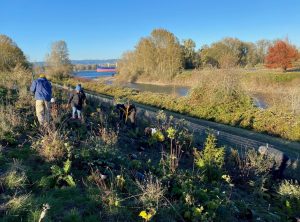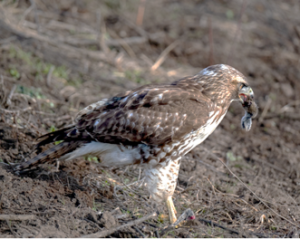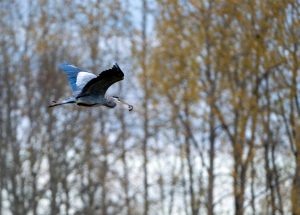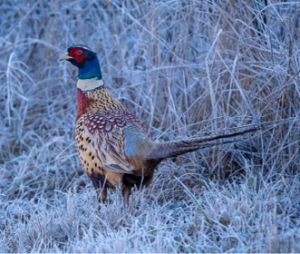Parcel 3 Berm a Refuge for Wildlife After Replanting

Crews take advantage of a rare sunny winter day for planting.
The Port of Vancouver USA’s Columbia Gateway is the largest contiguous tract of undeveloped industrial and deep-water marine property on the U.S. West Coast. The Vancouver Lake Flushing Channel separates Parcel 3 of Columbia Gateway and a neighboring property known as Cranes’ Landing, which is a vital feeding, foraging and resting site for sandhill cranes and other species. In 2021, the port completed construction of a 3,500 foot long, 80 foot wide and 12 foot high berm at Parcel 3 just south of the flushing channel to create a visual and sound buffer between the heavy industrial zoned property south of the flushing channel and the park, open space and wildlife conservation areas to the north.
The initial planting of the berm in 2021 included a combination of evergreen and deciduous native plant species. However, a stretch of 115+ degree days shortly after planting negatively impacted survival rates of these plants. A replanting project began in November 2022 and finished up in the spring of this year. 16 native species of 1,950 trees and 6,500 plants were planted in this time and to ensure better survival rates, improvements were made to the irrigation system. Additionally, invasive weed control efforts were made, and larger, more established sized plants were planted.
The port believes that environmental stewardship and economic development can co-exist, and as part of our community, we are committed to do our part. We take a proactive, innovative and integrated approach to natural habitat protection. Native tree and plant species were selected not only to meet the visual and acoustical goals of the berm project, but to also provide important habitat for wildlife visiting the site. This wildlife didn’t need to wait for a grand re-opening invitation. Several species of birds were spotted during the replanting process. Budding photographer and crew member, Toren Wood, was able to capture several photos of various birds including hawks, Great Blue Herons, pheasants while working at the site.
The berm and its plantings will be maintained in perpetuity by the port and will be closely monitored for plant health, invasive species, and maintenance needs such as mowing and irrigation system adjustments. We look forward to watching this area mature as a natural resting spot for a variety of birds.



